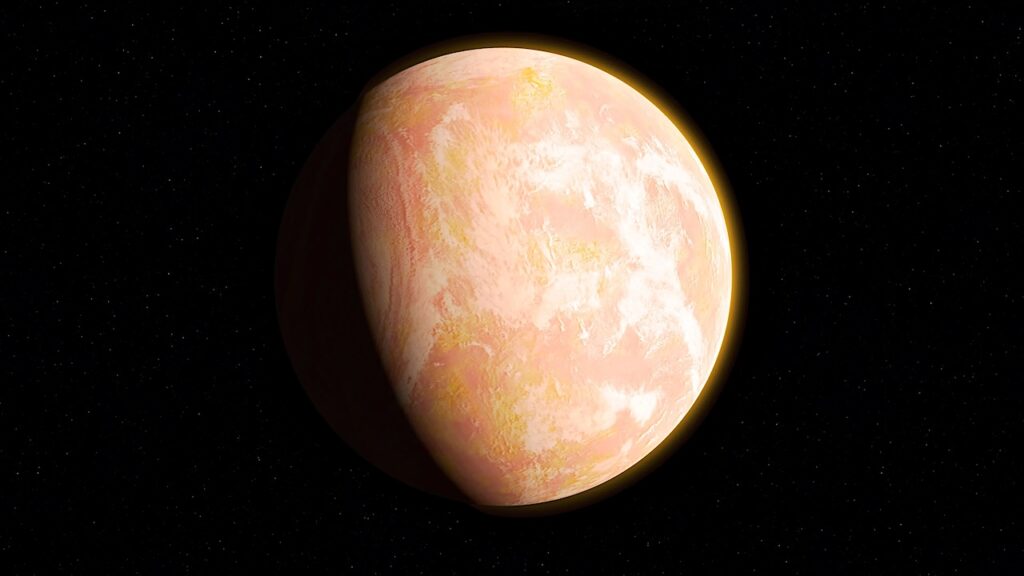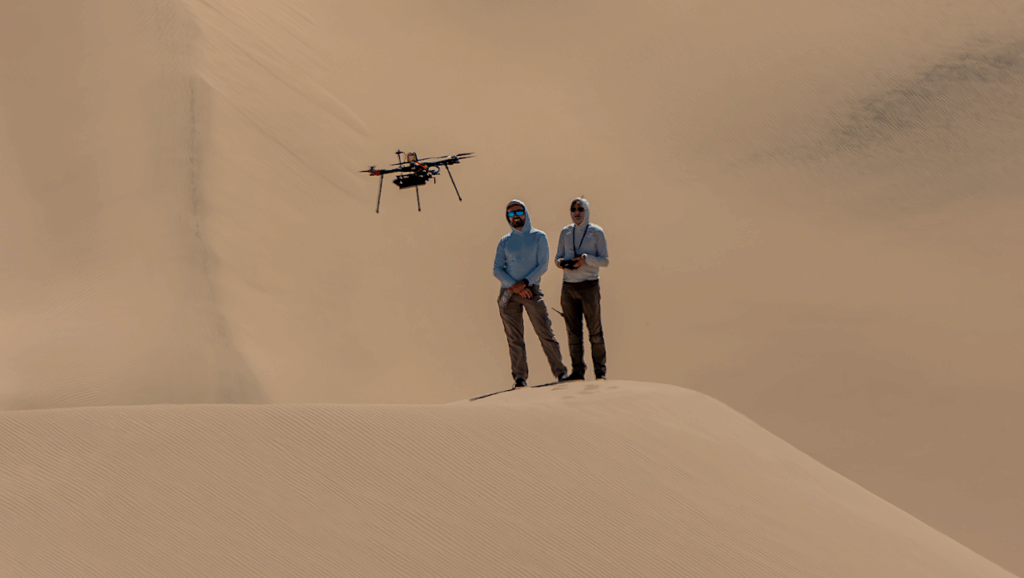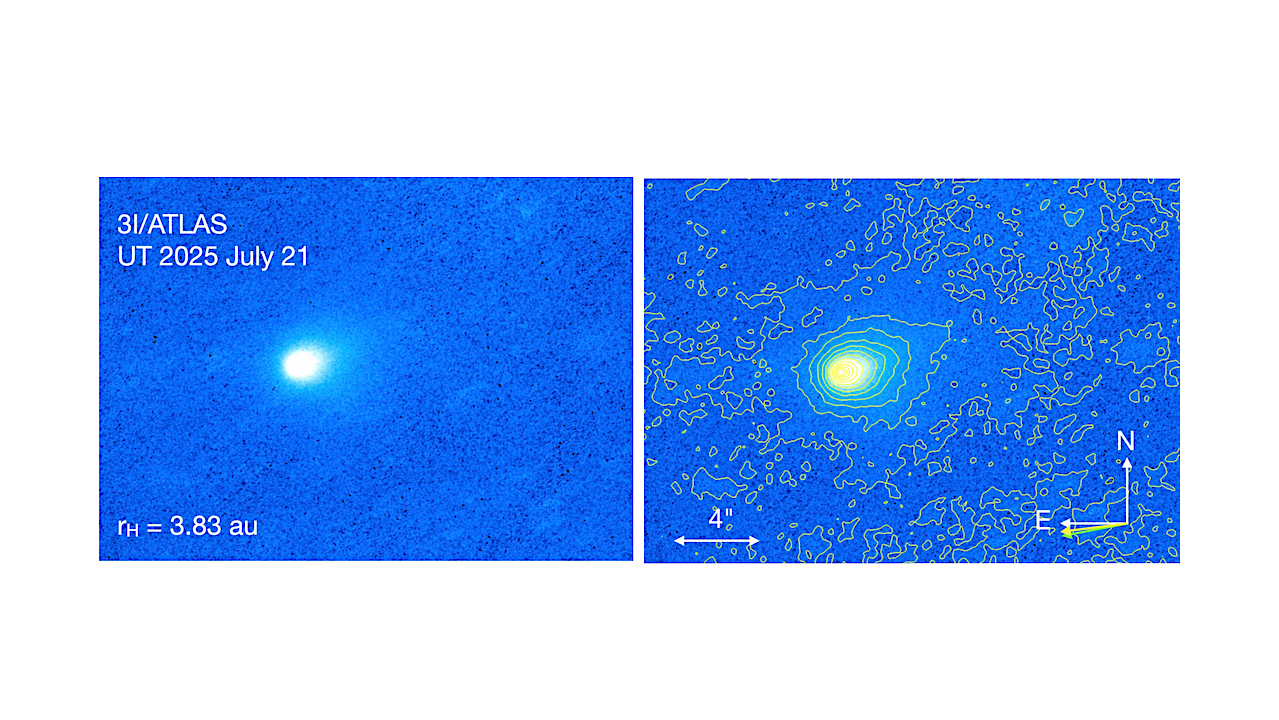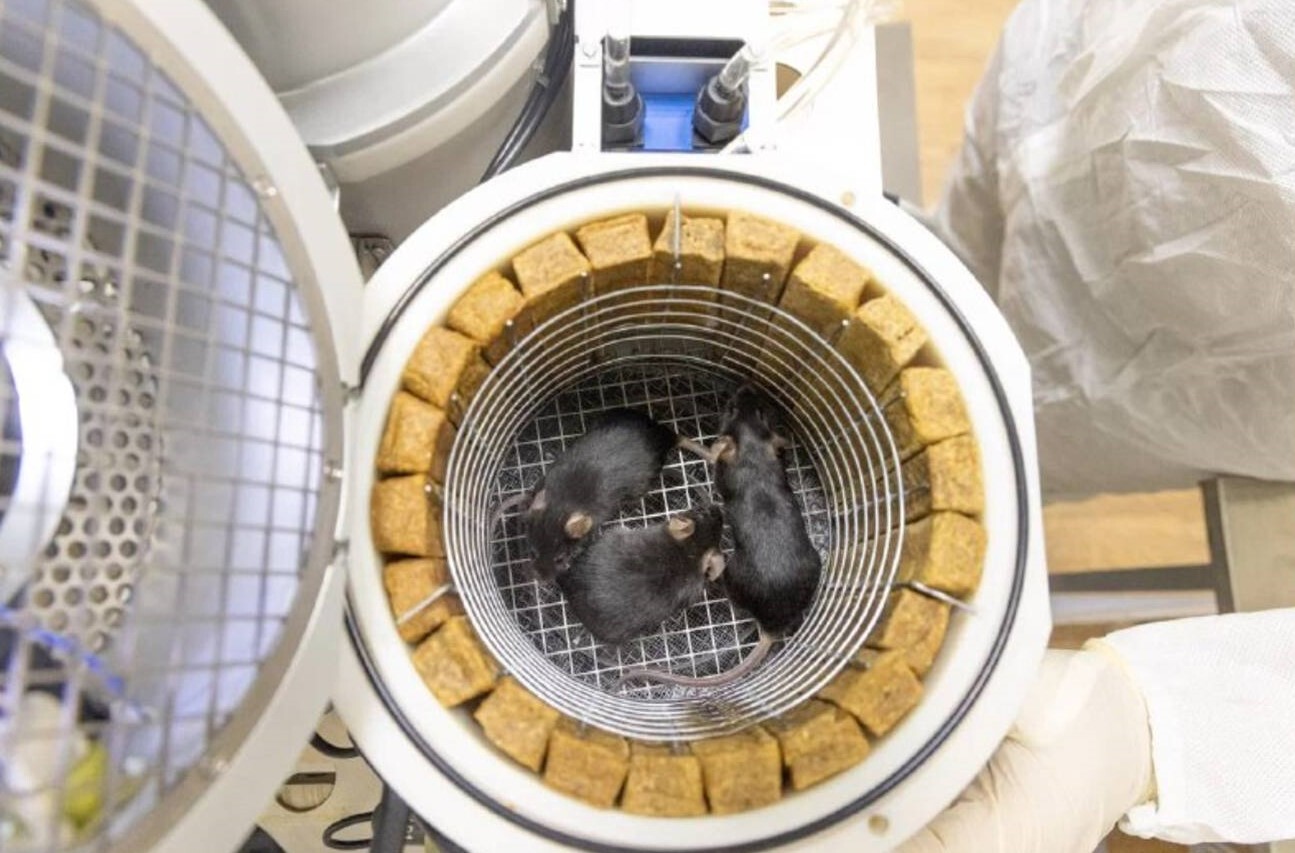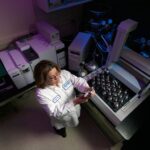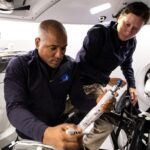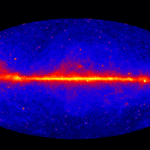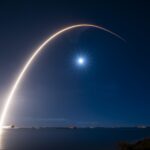Now Reading: Using Doppler Imaging To Model Stellar Activity And Search For Planets Around Sun-like Stars
-
01
Using Doppler Imaging To Model Stellar Activity And Search For Planets Around Sun-like Stars
Using Doppler Imaging To Model Stellar Activity And Search For Planets Around Sun-like Stars
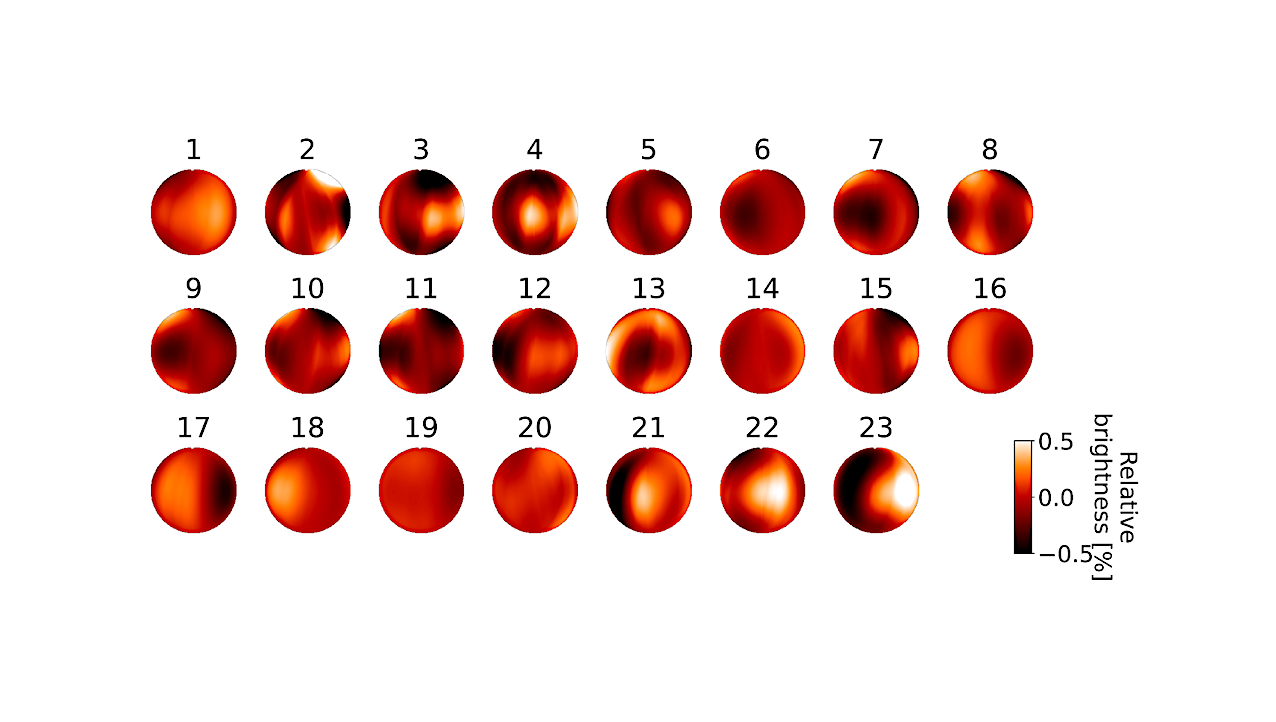

Best-fitting relative brightness distribution of the Sun for each of the 23 chunks listed in Tab. 1 and shown in Fig. 1. The color scale depicts the logarithm of the relative surface brightness. All maps are shown at a solar rotation phase of 0, computed using Eq. 2, and the chunk number is indicated on top of each map. — astro-ph.EP
Doppler Imaging (DI) is a well-established technique to map a physical field at a stellar surface from a time series of high-resolution spectra.
In this proof-of-concept study, we aim to show that traditional DI algorithms, originally designed for rapidly-rotating stars, have also the ability to model the activity of Sun-like stars, when observed with new-generation highly-stable spectrographs, and search for low-mass planets around them.
We used DI to retrieve the relative brightness distribution at the surface of the Sun from radial velocity (RV) observations collected by HARPS-N between 2022 and 2024. The brightness maps obtained with DI have a typical angular resolution of about 36 degrees and are a good match to low-resolution disc-resolved Dopplergrams of the Sun at epochs when the absolute, disc-integrated RV exceeds ~2 m/s. The RV residuals after DI correction exhibit a dispersion of about 0.6 m/s, comparable with existing state-of-the-art activity correction techniques.
Using planet injection-recovery tests, we also show that DI can be a powerful tool for blind planet searches, so long as the orbital period is larger than ~100days (i.e. 3 to 4 stellar rotation periods), and that it yields planetary mass estimates with an accuracy comparable to, for example, multi-dimensional Gaussian process regression. Finally, we highlight some limitations of traditional DI algorithms, which should be addressed to make DI a reliable alternative to state-of-the-art RV-based planet search techniques.
Baptiste Klein, Suzanne Aigrain, Michael Cretignier, Xavier Dumusque, Khaled Al Moulla, Jean-François Donati, Niamh K. O’Sullivan, Haochuan Yu, Andrew Collier Cameron, Oscar Barragán, Annelies Mortier, Alessandro Sozzetti
Comments: Accepted for publication in MNRAS
Subjects: Earth and Planetary Astrophysics (astro-ph.EP); Instrumentation and Methods for Astrophysics (astro-ph.IM); Solar and Stellar Astrophysics (astro-ph.SR)
Cite as: arXiv:2508.12963 [astro-ph.EP] (or arXiv:2508.12963v1 [astro-ph.EP] for this version)
https://doi.org/10.48550/arXiv.2508.12963
Focus to learn more
Related DOI:
https://doi.org/10.1093/mnras/staf1337
Focus to learn more
Submission history
From: Baptiste Klein
[v1] Mon, 18 Aug 2025 14:37:26 UTC (1,586 KB)
https://arxiv.org/abs/2508.12963
Astrobiology
Stay Informed With the Latest & Most Important News
Previous Post
Next Post
-
 012024 in Review: Highlights from NASA in Silicon Valley
012024 in Review: Highlights from NASA in Silicon Valley -
 02Panasonic Leica Summilux DG 15mm f/1.7 ASPH review
02Panasonic Leica Summilux DG 15mm f/1.7 ASPH review -
 03How New NASA, India Earth Satellite NISAR Will See Earth
03How New NASA, India Earth Satellite NISAR Will See Earth -
 04And Thus Begins A New Year For Life On Earth
04And Thus Begins A New Year For Life On Earth -
 05Astronomy Activation Ambassadors: A New Era
05Astronomy Activation Ambassadors: A New Era -
06SpaceX launch surge helps set new global launch record in 2024
-
 07Space Force plans new ‘Futures Command’ amid pressure to speed up modernization
07Space Force plans new ‘Futures Command’ amid pressure to speed up modernization













